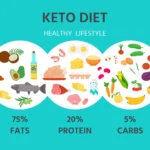You can easily grow a variety of veggies in pots, right in your backyard, on your deck, or even on your balcony.

You can grow yummy veggies in pots even if you don’t have a big garden. There are lots of options, from small radishes to long cucumbers, and even potatoes and beans. I used to grow most of my veggies in the garden, but I’d put tomatoes and peppers in pots in a greenhouse. When I had a courtyard garden with no garden beds, I experimented with growing different veggies in pots.
To pick the best veggies for your pot garden, choose ones you like to eat. With so many veggies that do well in pots, you’ll find some that work for you.
Here’s are the best vegetables to grow in pots on a patio or balcony
We’re going to explore 12 great veggies for your pot garden, whether it’s in your backyard, on a deck, patio, or even a balcony. We’ll look at the right pot size, where to place your pots for healthy plants, and when to expect your harvest.
It’s important to remember that when you’re growing in pots, watering and feeding your plants are vital. Unlike in the ground, pots have limited soil to hold water and provide nutrients. All the veggies listed here thrive in good-quality potting soil that’s rich and drains well, and your pots should have drainage holes.
1. Potatoes

Potato Growing Tips
- Sunlight: Make sure your potatoes get full sun.
- Pot Size: Use a pot that’s at least 12 inches wide and 12 inches deep.
- Harvest Time: You can start harvesting in late spring.
Potatoes are one of the easiest veggies to grow in pots. There are many potato types to pick from, and they all work well in containers.
To grow potatoes in a pot, place 2 or 3 seed potatoes on top of a few inches of soil, then cover them with a bit more soil. Put the pot in a sunny spot and water it well. Keep adding soil as the plant grows until the pot is full. When it’s time to harvest, simply tip the pot over and pick out the potatoes from the soil.
2. Beans

Growing Beans in Pots
- Sunlight: Make sure your beans get full sun.
- Pot Size: Use a pot that’s at least 12 inches wide.
- Harvest Time: You can start harvesting in the summer.
Beans are a fantastic choice for your pot garden, with a variety of types to choose from. You can grow fava beans in pots, and there are smaller kinds that work perfectly for containers. You can also opt for pole beans, which need slightly larger pots, around 18 inches wide. To support them, use poles or a trellis. They can even climb up existing fences or trellises.
3. Peas

Growing Peas in Pots
- Sunlight: Make sure your peas get full sun.
- Pot Size: Use a pot that’s at least 12 inches.
- Harvest Time: You can start harvesting in the summer.
Peas, like mangetout or sugar snap, can thrive in small pots, but they need some support as they grow. You can use a simple wigwam made of twigs or bamboo poles for this. There are also compact varieties of peas that require less support.
Fresh peas are a tasty treat right from the plant. To ensure a continuous harvest all summer, pick them regularly. For the best results, use a tomato fertilizer (like Tomato Tone, available on Amazon) to feed your pea plants throughout the season. This encourages a steady supply of flowers and pods.
4. Radish

Growing Radishes in Pots
- Sunlight: Radishes thrive in full sun to partial shade.
- Pot Size: Use a pot that’s at least 8 inches wide.
- Harvest Time: You can harvest from spring to fall.
Radishes are super quick to grow, taking less than a month from planting to harvest. Growing them in pots allows you to experiment with different colors, shapes, and flavors. Some radish varieties have short roots and do well even in shallow containers.
Growing radishes in pots is a breeze. Plant the seeds thinly and then thin them out until they’re about an inch apart. These peppery roots, often used in salads, are ready to harvest when they reach an inch in diameter.
5. Carrots

Growing Carrots in Pots
- Sunlight: Make sure your carrots get full sun.
- Pot Size: Use a pot that’s at least 8 inches wide.
- Harvest Time: You can start harvesting from summer to fall.
Carrots can thrive in larger pots, and there are two choices for home gardeners. Round carrot varieties work well in pots, but if you want the longer traditional carrots, use pots that are at least 18 inches deep.
To grow carrots in pots, gently sow the carrot seeds directly into the pot from mid-spring onward and place the pot in a sunny spot. Keep the soil moist throughout the season by watering the container well.
6. Peppers

Growing Peppers in Pots
- Sunlight: Ensure your peppers get full sun.
- Pot Size: Use a pot that’s at least 12 inches wide.
- Harvest Time: You can start harvesting from late summer onward.
You can grow both bell peppers and chili peppers in pots, offering a wide variety of sweet or spicy options in different shapes, colors, and sizes.
To successfully grow peppers in pots, it’s essential to water your plants regularly and keep the soil consistently moist during the growing season. Additionally, give your pepper plants a regular dose of liquid tomato fertilizer when the first flowers appear for the best results.
7. Lettuce/Salad ki patti

Growing Lettuce in Pots
- Sunlight: Lettuce can grow in full sun or partial shade.
- Pot Size: Use a pot that’s at least 6 inches wide.
- Harvest Time: You can harvest lettuce all year round.
Lettuce is one of the easiest veggies to grow in pots. It grows quickly and doesn’t need deep soil. Pots also help protect it from pesky critters like slugs.
To grow lettuce, you can plant seeds directly in the pot or buy small plants to get a quick harvest. Many types of lettuce can be cut, and they’ll keep growing, giving you lots of salads. Mixing different lettuce types in your pots not only looks pretty but also adds various textures and flavors to your salads.
8. Cucumbers

Growing Cucumbers in Pots
- Sunlight: Cucumbers like full sun or partial shade.
- Pot Size: Use a pot that’s at least 18 inches wide.
- Harvest Time: You can harvest in the summer.
You can grow both bush and vining cucumbers in pots, but vining types need bigger pots due to their extensive root system. Cucumbers also require support, such as a trellis, netting, strings, or cages as they grow.
When growing cucumbers in pots, regular watering is crucial because they’re hungry plants. Keep the soil consistently moist and make sure to pick cucumbers regularly to ensure a continuous harvest.
9. Chard

Growing Swiss Chard in Pots
- Sunlight: Swiss chard likes partial shade.
- Pot Size: Use a pot that’s at least 12 inches wide and 8 inches deep.
- Harvest Time: You can pick Swiss chard from summer to late fall.
Swiss chard is a great choice for a continuous harvest of tasty leaves. It’s not only versatile in the kitchen but also adds a pop of color to your outdoor space with its vibrant yellow, pink, and red leaves. You can enjoy the leaves when they’re small or full-sized.
Since Swiss chard doesn’t have deep roots, you don’t need a big pot. You can plant the seeds directly in the pot or buy small plants to grow. It takes about 30 days for small leaves and up to 60 days for mature ones to be ready for harvest.
10. Tomatoes

Growing Tomatoes in Pots
- Sunlight: Tomatoes need full sun.
- Pot Size: Use a pot that’s at least 12 inches wide.
- Harvest Time: You can start harvesting from summer to early fall.
Tomatoes are among the most popular plants for pot gardening, offering a wide range of colors, shapes, and sizes.
Most tomato varieties work well in pots, especially the shorter bush types that don’t need stakes or cages.
When growing tomatoes in pots, it’s essential to regularly feed and fertilize these hungry plants to keep them healthy and producing fruit. Give them plenty of space to grow and place them in a spot with as much sunlight as possible, around eight hours a day. In return, they’ll reward you with an abundance of delicious fruits.
11. Onions

Growing Onions in Pots
- Sunlight: Onions thrive in full sun.
- Pot Size: Use a pot that’s at least 24 inches wide and 10 inches deep.
- Harvest Time: You can harvest in the summer.
Growing onions in containers is quite similar to growing them in the ground. To produce good-sized onion bulbs, you’ll need a wide and shallow pot. You can either plant onion sets or sow onion seeds in pots to get onions ready for harvest in the summer.
Onions enjoy a sunny spot and prefer about six to eight hours of sunlight daily. Aside from bulbing onions, you can also grow bunching onions in pots. Simply sow them directly in the soil in spring, and you can harvest them in around eight weeks.
12. Arugula/Gargeer

Growing Arugula in Pots
- Sunlight: Arugula likes full or partial sun.
- Pot Size: Use a pot that’s at least 8 inches wide.
- Harvest Time: You can start harvesting from late spring to fall.
Arugula produces zesty leaves perfect for salads, sandwiches, or even as an ingredient in pesto. These veggies grow quickly, and you can enjoy your first harvest in just six weeks. With regular picking, you’ll encourage continuous growth for a long harvest.
Arugula thrives in cooler weather, so it’s best to plant it in early spring or late summer. However, be cautious during hot summer spells as it can go to seed quickly.
All Credits Goes to Their Legit Owner
Also Read This: What is WiFi Calling? How and when to use WiFi calling on iPhones and Androids 2024













